L3954B Mid Temperature Engobe
Description
Engobes (slips) are very widely used in industry (especially tile). They are completely opaque. They must be firing-shrinkage and thermal-expansion matched to the body they are used on. The application and use of engobes is tricky. However, not only do they open up new design and functional opportunities but engobes make it possible to do things with stonewares that formerly required porcelains. We are not yet manufacturing this product but you can make it for yourself.
This engobe (with the Zircopax addition) fires very white (even better with a 0.1-0.2% addition of blue body stain). We intend for it to be compatible with M340, M390/M350 and Coffee Black (its fired shrinkage is TOO LOW for reliable use on P300 or Polar Ice, but OK for M370).
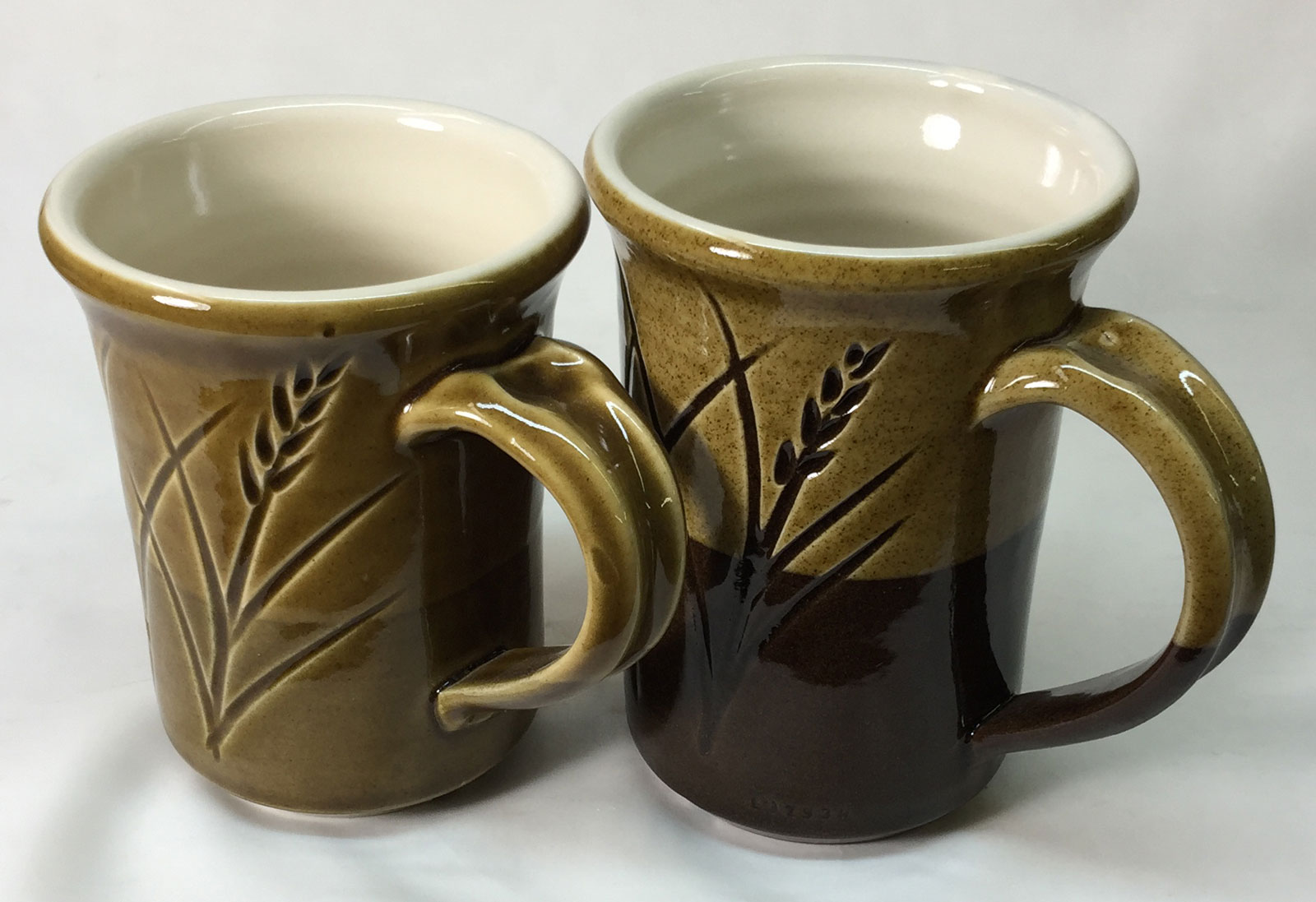
L3954B white engobe on M340 and M390. The engobe has been applied to the inside and wrapped over the rim to midway down the outside. The clear liner glaze is G2926B Whiteware transparent. The outside glaze on the right is that same clear with 4% added iron oxide. The outside glaze on the left mug is GA6-A Alberta Slip clear using Ferro Frit 3195 as the flux.
Process Properties
The slurry needs to have less water and be more viscous and thixotropic that a glaze in order to hang on to leather hard ware (it will not work on dry ware). This recipe contains lots of bentonite (to make it sticky), that means it takes hours (even all day) to dry enough for further handling of the ware. When the slurry is right you can dip a stiff, leather hard item and on extraction it drains well then gels and holds. Draining can be encouraged by holding pieces at an the angle, rolling and shaking a little to help them drain toward a single point. Within ten seconds the last drip should fall and gelling take hold enough so that that on uprighting the piece for drying there are no runs. Before each use the slurry must be propeller-mixed and adjusted for viscosity/thixotropy if needed (see below).
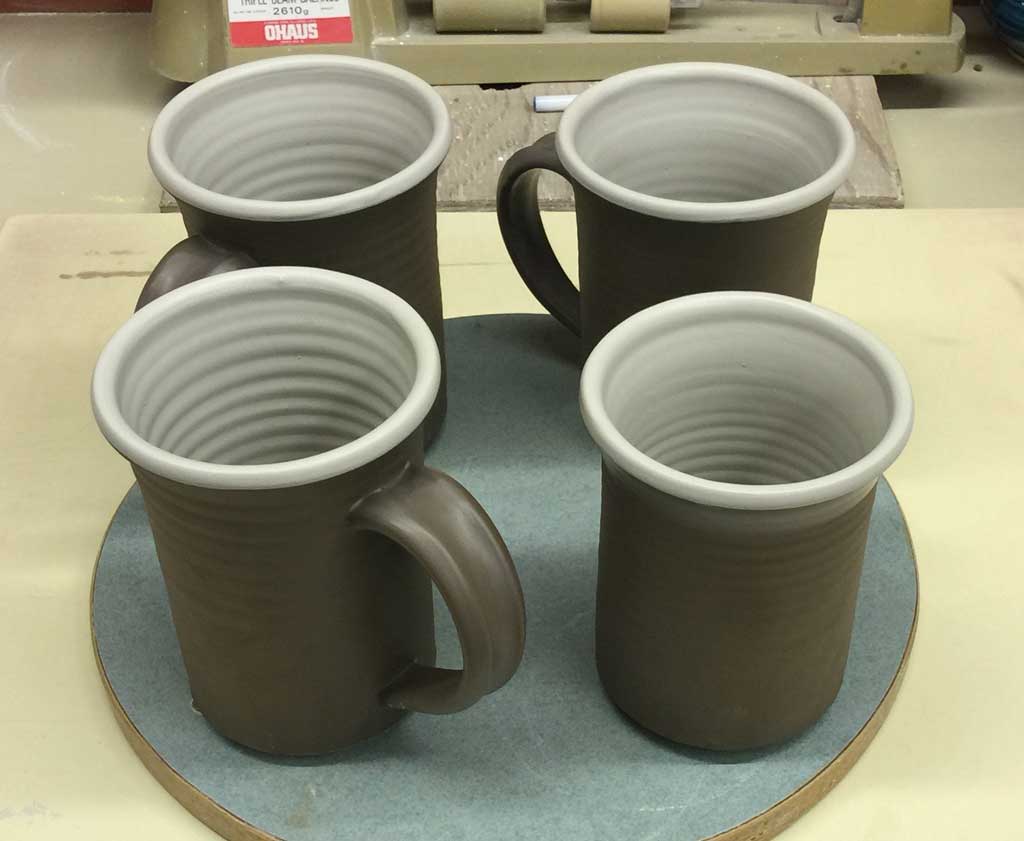
Engobes have been applied inside (white) and out (black) on these M340 mugs (at the stiff leather-hard stage). The outside was done first by simply pushing the untrimmed mugs base-down into the black engobe (up to the rim) and setting them down on plaster (the engobe application re-softens them). After a couple of hours, they were attached to the wheelhead (lip down with water) and the base trimmed (exposing the M340 surface below). Then the white engobe was poured in, poured out and the rim dipped up to the black.

The M340 mugs have been engobed a then stiffened and the wheat design incised (this is L3954B with 10% burnt umber instead of 10% zircopax). They will dry lips-down without covering (being ready the next morning for bisque firing). The secret to the fast drying is waxing the handles at leather hard stage to slow down their drying (thus evening up the water content of the whole piece).
Recipe
For further details read the L3954B recipe page at digitalfire.com. The base recipe fires white however it is easy to convert it to black: Exchange the 10% Zircopax with 10% black stain.
Mixing Instructions
It is vital that an engobe slurry be correctly mixed to be able to apply it evenly and thickly enough. Engobes are not like glazes. They must be more viscous (stop motion almost immediately after stirring or mixing is ceased), more thixotropic and have lower water content (therefore must be deflocculated). Their fluid properties must be fine-tuned on each use. Click here for mixing instructions.
Fine tuning: The system is very sensitive. If the slurry gels too quickly after stirring, or goes on too thick, add a little Darvan (perhaps only 1 or 2 drops for a gallon). If the slurry goes on too thin or runs and drips too much, add a few drops of concentrate epsom salts solution (30g/100ml, better than epsom salts powder in this situation). Sometimes small lumps will form in the slurry immediately after an excessive epsom salts addition, that means a little Darvan (and propeller mixing) is needed to smooth it back out. Be patient, methodical. Aged slurry will perform better, it will hang on and go on evenly in a slightly more fluid state.
We have a Youtube video on fine-tuning thixotropy here
Brushing version: You can make your own brushing glazes by adding CMC gum. This makes it possible to paint the engobe on to dry and bisque ware.
Gallery
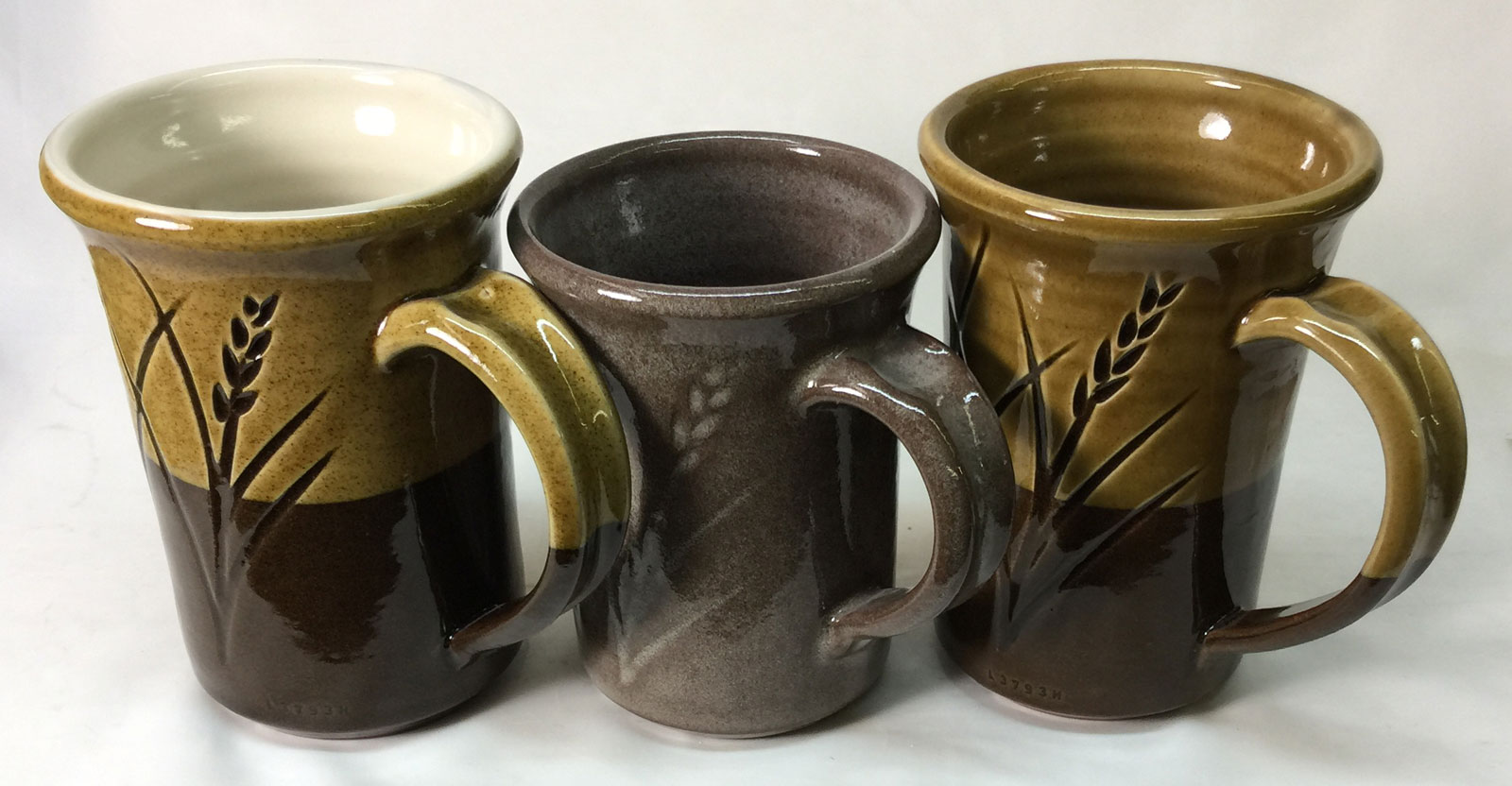
Clear glazes often do not work on our dark burning bodies (like M390, Coffee Clay). The center mug is clear-glazed with G2926B (and is full of bubble clouds).
Left mug: The outside glaze adds 4% iron to G2926B (the iron particles are acting as a bubble fining agent). Right mug: The whole thing is glazed with GA6-B Alberta Slip base glaze.
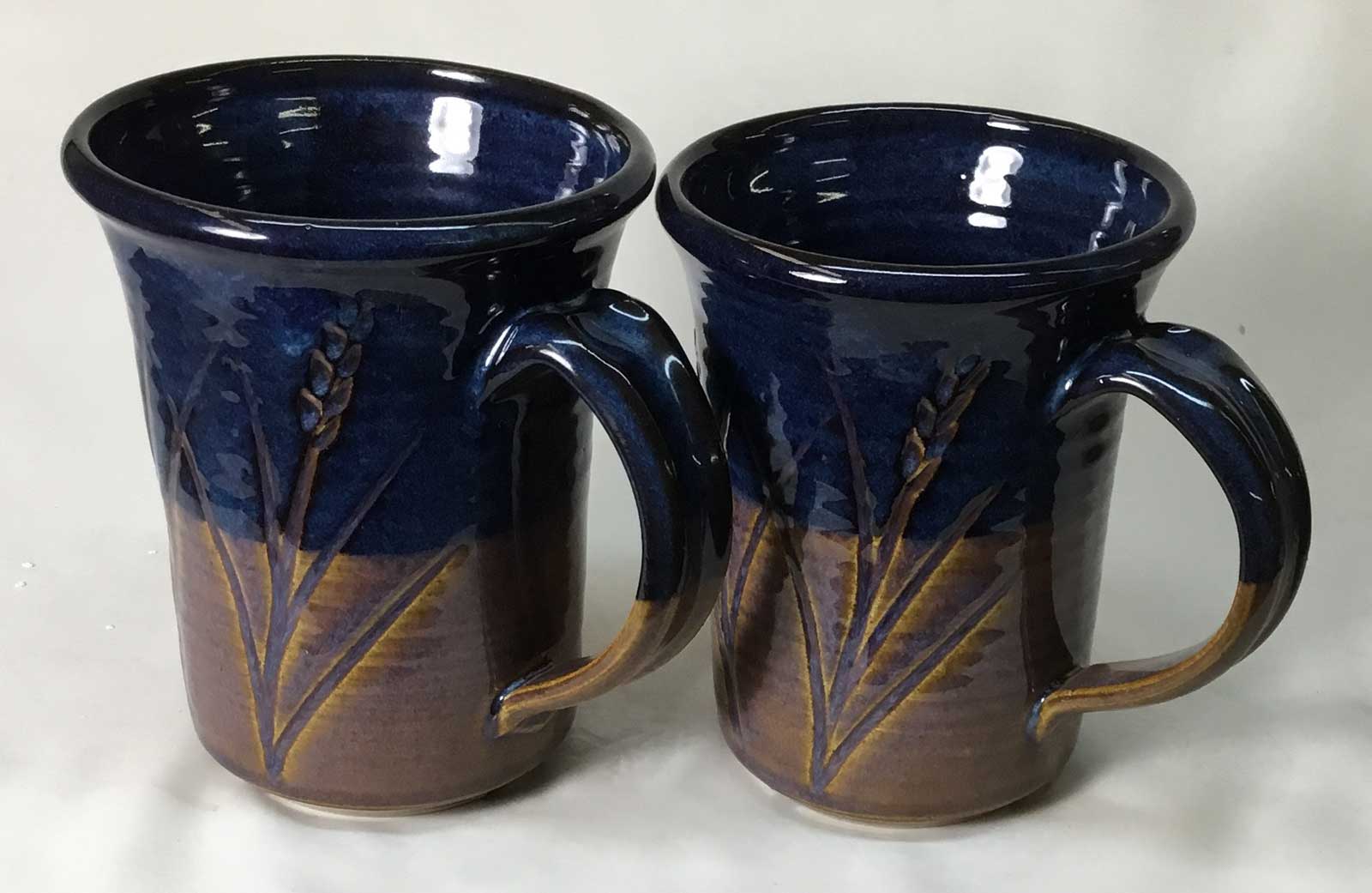
A very deep and rich blue (with no cobalt). This is M340 fired to cone 6. Black-firing L3954B engobe (having 10% Burnt Umber instead of the normal 10% Zircopax) was applied inside and partway down the outside (at the stiff leather hard stage). The incising was done after the engobe dried enough to be able to handle the piece. The glaze is GA6-C Alberta Slip rutile blue.
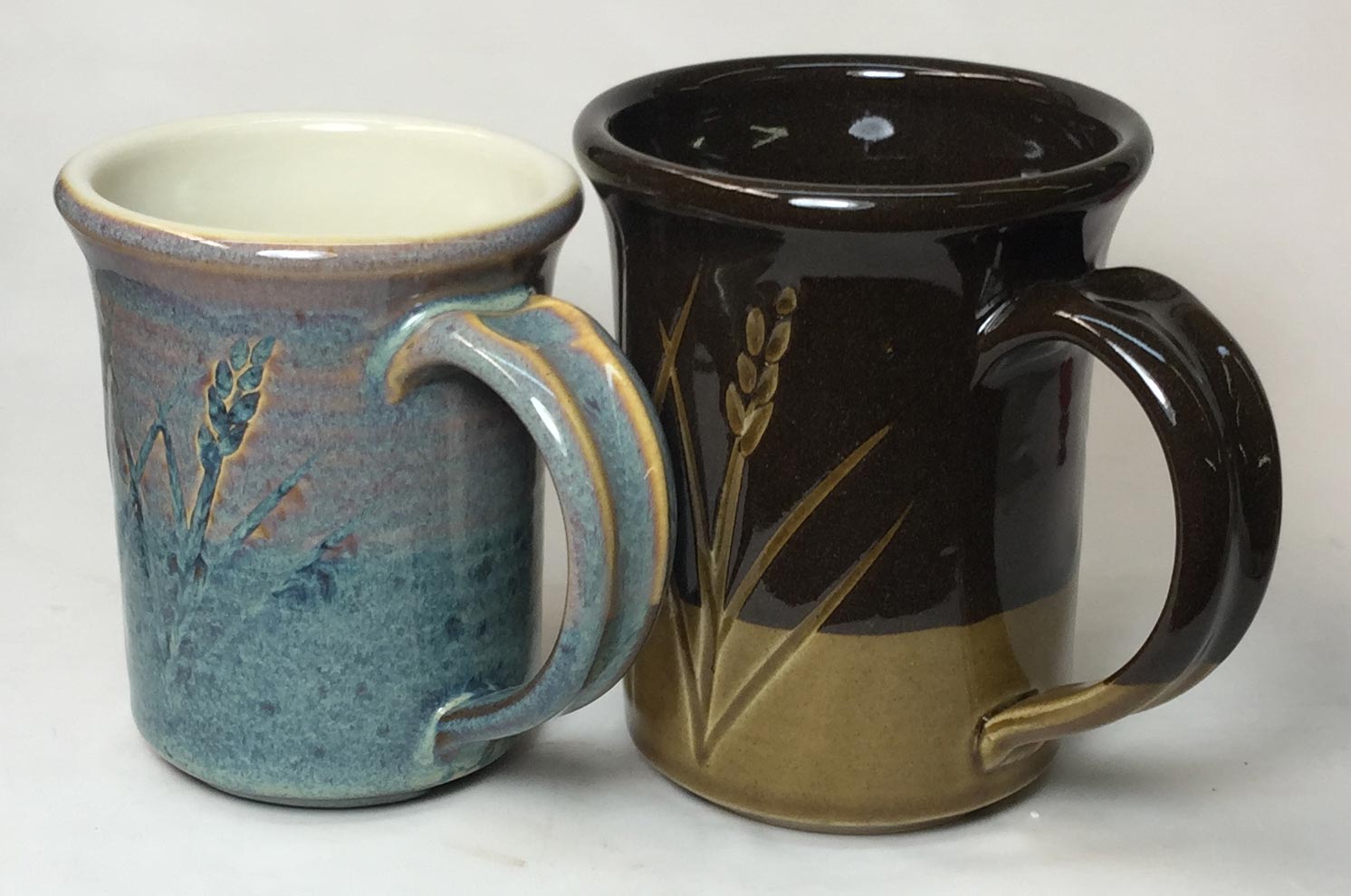
Left: Coffee clay with L3954B white engobe inside and partway down the outsides. The liner glaze is Plainsman whiteware clear G2926B. Outside glaze is GA6-C Alberta Slip Floating Blue. Right: M340 with black stain replacing the Zircopax in the engobe recipe. It is glazed inside and out with Alberta Slip base GA6-A (using Frit 3195 as the flux).
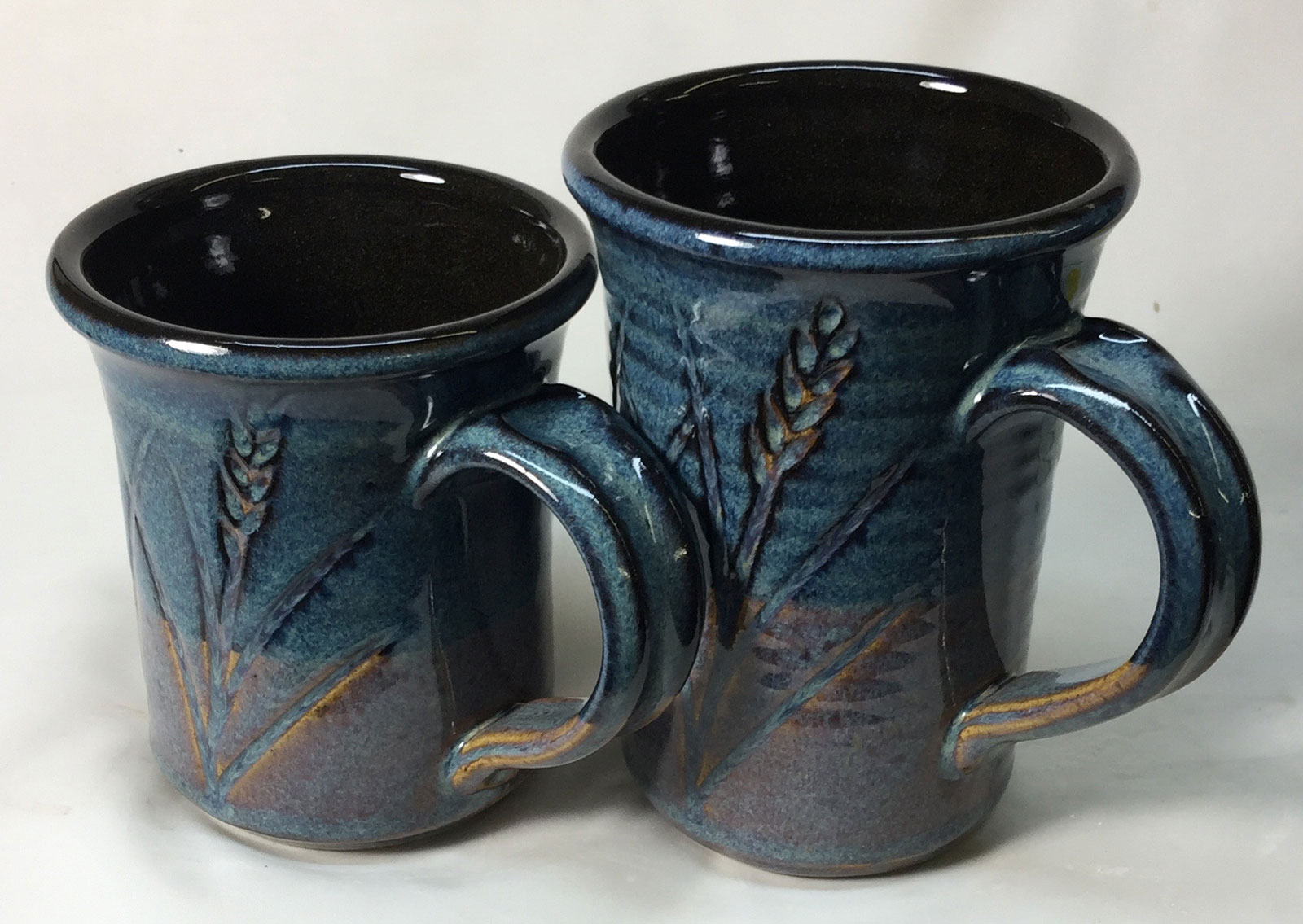
M340 mugs with L3954B engobe (having a Mason 6600 black stain addition). These are overglazed with GA6-C Alberta Slip Rutile blue on the outsides and Alberta Slip GA6-A amber base on the insides.
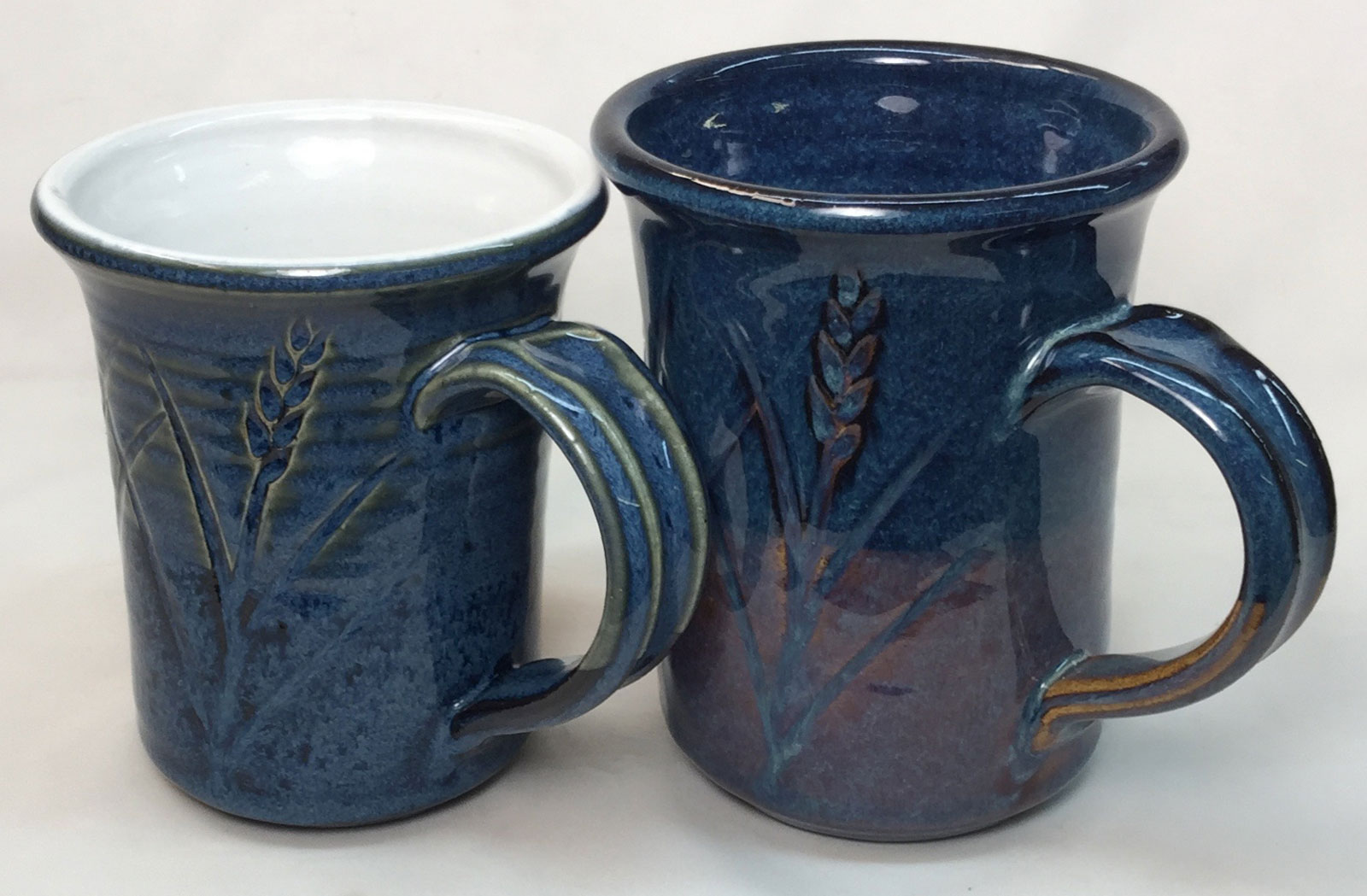
Cone 6. Left: Coffee Clay. At leather hard it was L3954B white engobed inside and half way down the outside. At bisque G2926B white glazed inside and GR6-M Ravenscrag floating blue on the outside (notice now white the combination of white glaze and white engobe are, even though the underlying body is black). Right: M340 L3954B black engobed inside and half way down outside and at bisque completely glazed with GR6-M.

